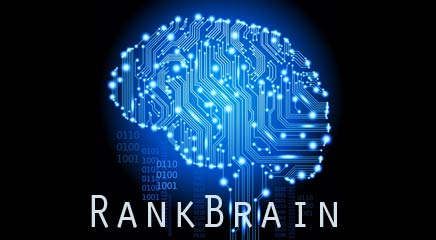Google is easily the most trusted source for online information in the world. We rely on the search engine for just about everything from restaurant recommendations and weather forecasts to song lyrics and self-diagnosis. Ever wonder how the search platform consistently delivers trusted and relevant information to your most pressing questions? Or how it determines what qualifies to shop up at the top of page one? We’ll let’s take a look at a core component of Google’s algorithm, known as RankBrain.
Google’s release of RankBrain, is one of the biggest updates in its history and has made big waves in determining what results are shown when you initiate a search query. Using machine learning, RankBrain helps Google determine the most relevant results to display based on criteria like your location, true search intent, and information others may have found helpful.
How Does It Work
Let’s put ourselves in Google’s shoes for a minute and try to understand the intent of a search query. Take a search like “Super Bowl location” as an example.
You could be looking for answers in regards to historical information about the very first Super Bowl, venue size of Super Bowl LIII, the location of 2020’s event, or even directions to the arena.
Now, imagine trying to give a relevant answer to the vague query. Without additional context, you likely wouldn’t be able to provide information that matched the intent of the searcher.
Using RankBrain, Google is able to mathematically calculate results based on patterns it has learned while tracking search behavior and uses that data to decide what results show up in the SERP.
Google answered the query with a featured snippet, in this case, an answer box with a list of all Super Bowl event locations. Using its RankBrain feature, Google thinks the intent of the search is to learn about past and future physical super bowl locations.
Now, let’s say it’s just days after the Patriots (Go Pats!) claim their 6th Super Bowl title and you search the given query. While a recent event may seem more relevant, Google leans on collected behavior to determine the majority of searchers are actually looking to find information about where the 2020 showdown will be held.
Next, imagine you are in Atlanta on Super Bowl LIII game day and conduct the same search. Rather than spitting out the same results or information about Mercedes-Benz Stadium, Google would likely acknowledge your physical location and showcase driving or walking directions to the Superdome.
As Google methods continue to change what displays in the SERP, it leaves us asking one question…
How Does This Impact Your Business?
If you have a business and/or a website, one of your top goals need to be about your SEO and being found online.
There’s no question that RankBrain will play a vital role in your SEO rankings in 2019. If your site is already full of quality, rich content, you are well on the right path. Your objective should be to keep your content relevant, conversational, and up-to-date for search intent.
If you are serious about improving SEO for your website, optimizing with Google RankBrain in mind is key. Contact us today for expert SEO guidance and management. We take the hassle and confusion out of optimizing your website!
At WDC, we believe honest business and innovative design go hand-in-hand. Our talented team of designers, marketers, and developers are as diverse as their work. We offer a range of services from creative web design and development to digital marketing strategies and branding solutions tailored specifically to your business. Contact Bill at [email protected] or visit www.wilmingtondesignco.com.
Over the last few months, roughly 15% of Google searches have been interpreted by the new Google system known as RankBrain.
RankBrain uses a type of AI called Deep Learning which converts words and phrases into mathematical objects known as vectors. These vectors allow the Google computers to understand the words and phrases in terms of probabilities and patterns. This approach is particularly useful when the user has either miss-spelled a word or has used a word or phrase which the Google algorithms have not seen before.
In tests at the Google search laboratory, RankBrain was pitted against the Google search engineers to guess which from a group of pages would rank top for specific phrases. The Google engineers guessed correctly 70% of the time, while RankBrain achieved an impressive 80% success rate.
RankBrain is one of the roughly 300 signals which are used in the Google search algorithm. In an interview with Bloomberg Greg Corrado said “in the few months it has been deployed, RankBrain has become the third-most important signal contributing to the result of a search query. I was surprised, I would describe this as having gone better than we would have expected.”
The includsion of RankBrain in the algorithm is part of Google’s overall strategy to invest heavily in the AI side of the company in order to stay ahead of the competition. The company is looking to expand AI and Deep Learning technology into every aspect of it’s business. Google’s CEO Sundar Pichai added “machine learning is a core transformative way by which we are rethinking everything we are doing.”
In order to understand a little more about Deep Learning and how RankBrain learns and deals with ‘vectors’, read the Google post “Learning the meaning behind words.” This post describes how a computer learns through similarities in concepts. The chart from the article depicts how after reading thousands of news articles, Deep Learning can allow a computer to learn the concept of capital cities



